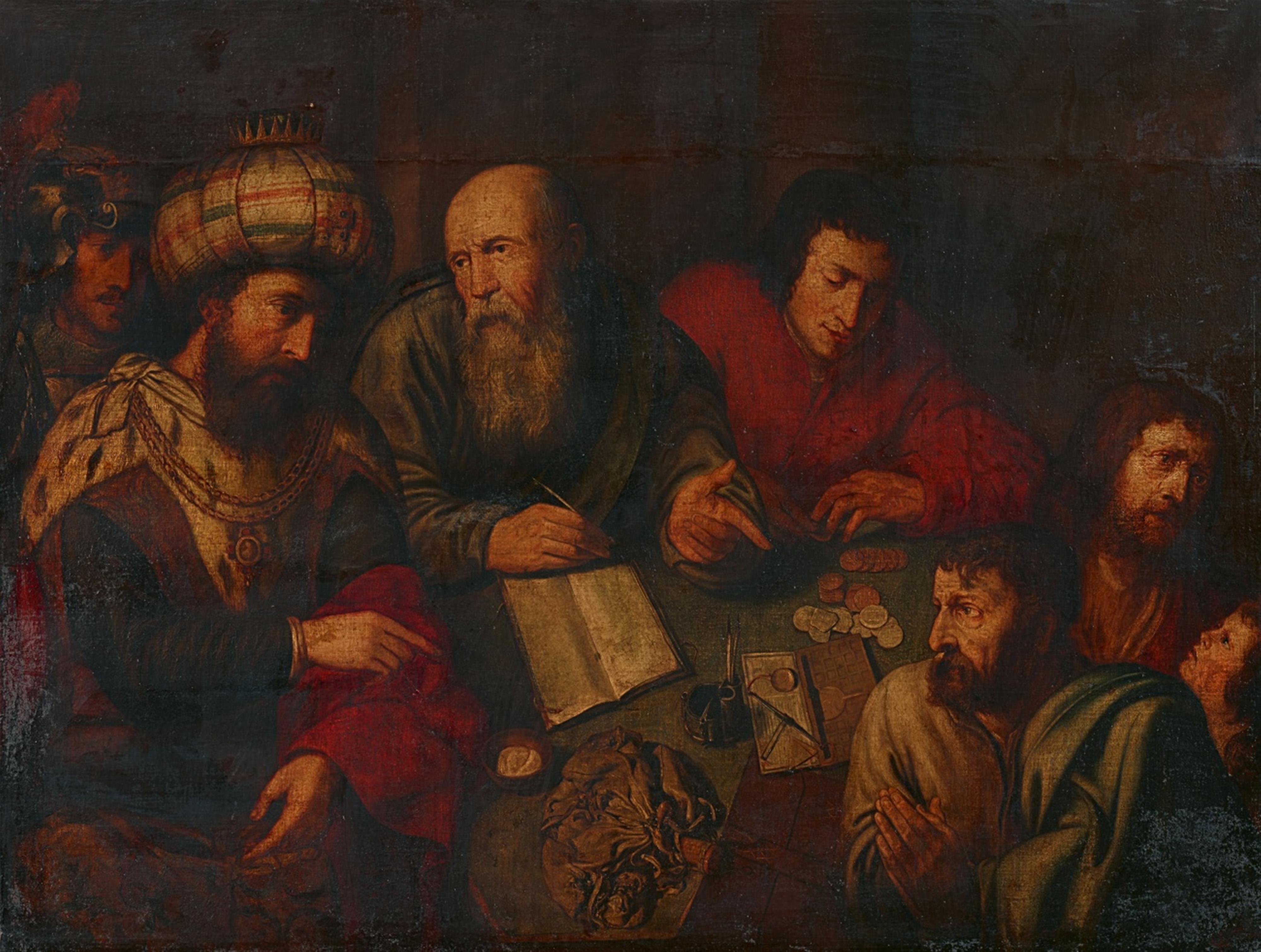Jan Woutersz Stap, attributed to
The Tax Collector
Oil on canvas (relined). 137 x 181 cm.
Jan Woutersz Stap made a name for himself in Amsterdam in the second quarter of the 17th century, a time when painting in the city was dominated by the influence of Rembrandt, with an unusual oeuvre. Stap painted large-figure genre paintings with money changers and tax collectors as their principal motifs, drawing inspiration from the Netherlandish masters of the early 16th century, especially Quinten Massys and Marinus van Reymerswale. His successful rendition of the motifs, composition, and style of the previous century in the past led researchers to mistake Jan Stap for a 16th century artist. However, newly surfaced documents and a date on one of his works in the Rijksmuseum in Amsterdam have finally allowed scholars to properly classify his work (cf. A. Bredius, in: Oud Holland 52, 1935, and A. van Schendel, in: Oud Holland 54, 1937).
So far around 30 works have been attributed to this artist. The present large-format canvas depicts the office of a landlord or tax collector. The pitiful gesture of the man in the lower right suggests that he was unable to pay his dues and is asking for an extension. A steward in the centre of the composition points out the petitioner to his master. The landlord's Oriental costume with a crown and turban provide the only subtle reference to the influence of Stap's contemporary Rembrandt, who was just five years his junior.

